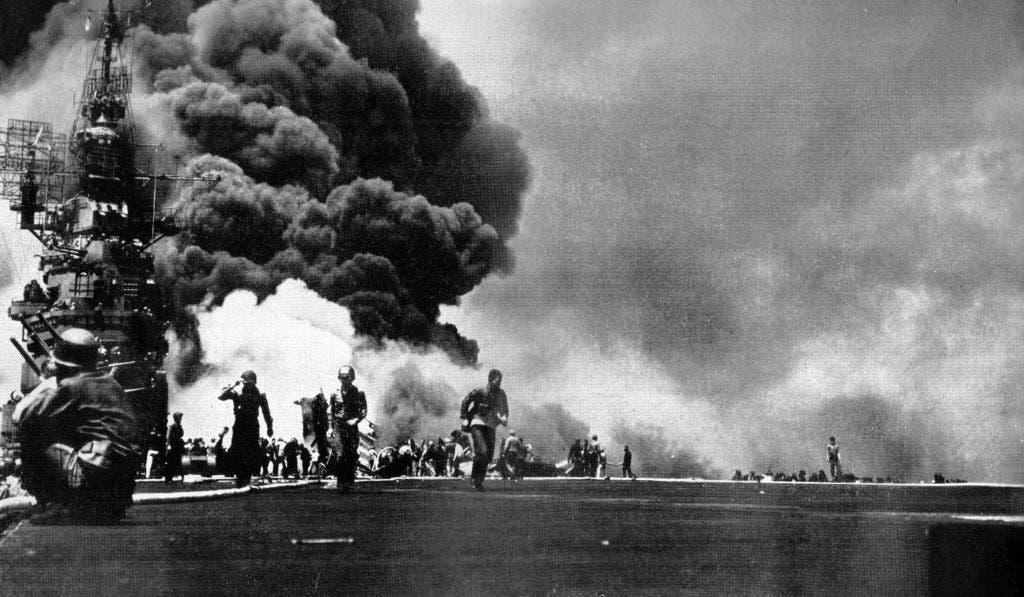On October 25, 1944, Imperial Japan sent kamikaze suicide planes to attack American warships over Surigao Strait in the Philippines. The Americans were horrified by these attacks, and by the end of World War II in 1945, approximately 130 American warships had been sunk or damaged by kamikazes, resulting in the deaths of as many as 3,000 U.S. servicemen and women. The kamikaze pilots themselves, numbering around 5,000, also perished in these attacks.
The kamikazes were Japanese Zero fighter planes stripped of their normal equipment and laden with explosives, reaching speeds of over 300 miles per hour. The attack on the escort carrier USS St. Lo resulted in the ship sinking in just 30 minutes, with 134 crew members losing their lives. The following attacks on American escort carriers also inflicted casualties, with nearly 300 sailors killed and hundreds more wounded on October 25 alone.
The term “kamikaze” translates to “divine wind” and refers to a historical event in Japan where a typhoon destroyed an invading Mongol fleet in the 13th century. The fanatical resolve of Japanese pilots turned their aircraft into guided missiles, exceeding the results achieved with orthodox air tactics. The Japanese launched these suicide attacks on St. Crispin’s Day, coincidentally coinciding with significant historical battles such as the Battle of Agincourt led by King Henry V in 1415.
St. Crispin’s Day has been the backdrop for several significant military events, including the Charge of the Light Brigade during the Crimean War in 1854 and the recapture of Lisbon from Islamic forces during the Second Crusade in 1147. The Battle of Surigao Strait, part of the larger Battle of Leyte Gulf, marked a key moment in World War II, where American forces achieved a decisive victory over Japanese sea and air power.
The Battle of Leyte Gulf was a turning point in the Pacific theater, leading to the destruction of Japanese naval capabilities. The emergence of kamikazes signified a desperate and frenzied phase in the war, where Japanese pilots sacrificed themselves in suicidal attacks on American warships. These events on St. Crispin’s Day in 1944 highlight the sacrifices and horrors endured by both sides in the final months of World War II.













